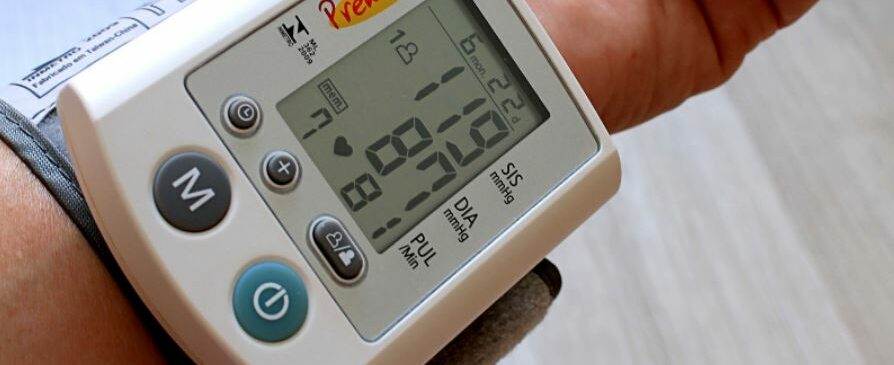High Blood Pressure (HBP), or hypertension, is often referred to as the “silent killer” for many victims across the United States. Nearly half of American adults (47% or 116 million) live with hypertension. High blood pressure is responsible for nearly 14% of deaths globally. This is more than any other singular risk factor. Nearly 55% of strokes and 47% of coronary heart disease are attributed to high blood pressure.
Table of Contents
What is High Blood Pressure?
Blood pressure is a measurement of the force of blood pushing against your artery walls. When this measurement is high, your body is at risk of adverse symptoms and even death. High blood pressure is defined as having a reading of 140 or higher for the first number and 90 or higher for the second number.
High blood pressure can develop slowly over time with minimal to no symptoms at all. Just because you are not experiencing symptoms, does not mean the damage is not being done. It is important to be proactive in measuring your blood pressure to determine if treatment could be beneficial to your health.
Hypertension increases the workload of your heart and blood vessels. This strenuous work can cause many health problems and extensive damage to your artery walls.
What Causes High Blood Pressure?
High blood pressure can be primary or secondary. This means that it can occur without any known causes (primary) or can be the result of other conditions or issues (secondary).
For many HBP suffers, the cause of their hypertension is unknown. However, certain risk factors are often correlated to the development of high blood pressure. Knowing these risk factors, and taking proactive steps towards a healthy lifestyle, can help you lower your risk of suffering from hypertension.
There are several types of risk factors when it comes to high blood pressure. First, are non-modifiable risk factors. These are factors that you cannot change. Awareness and proactivity are key in eliminating the risk and impact of HBP on your health. These risk factors include things such as:
- Family History & Genetics
- Ethnicity (African Americans & Non-White Hispanic Americans are statistically at a higher risk for developing high blood pressure)
- Age (Ask your doctor for a blood pressure reading each year if you are between 18 & 39 with other risk factors for HBP or if you are over 40. Anyone over 18 should be screened at least once every 2 years.
Modifiable risk factors, on the other hand, can be treated or controlled through lifestyle changes, medication, and other methods of care. Modifiable risk factors include:
- Limited physical activity & exercise
- Excessive alcohol consumption spanning many years
- High sodium (salt) diet
- History of drug or nicotine us
- Extreme emotional stress
Am I Suffering from High Blood Pressure?
Most individuals do not experience symptoms of high blood pressure, especially in the early onset of the condition. However, as severity of hypertension increases certain symptoms may begin to appear. While preventative measures are the best option in detecting HBP, some symptoms to look out for include:
- Heart palpitations
- Shortness of breath
- Nausea/vomiting
- Nosebleeds
- Headache
- Fatigue
- Fainting or lightheadedness
- Double or blurred vision
Treatments for High Blood Pressure
Once identified, it is important to seek treatment for High blood pressure to avoid extensive and severe damage to the arteries. There are many lifestyle changes that can be put into place to treat high blood pressure. These options typically depend on the severity of the damage and the risk associated with the future development of additional conditions.
- Avoid smoking & limit alcohol consumption
- Commit to eating a heart-healthy diet
- Lower sodium intake
- Exercise (under the direction of your doctor)
- Weight-loss regimens
- Stress management
- Regular doctor visits
A Non-Invasive Drug-Free Treatment for High Blood Pressure
The Journal of Human Hypertension published an exciting study for HBP sufferers. A non-invasive and drug-free procedure has been shown to significantly reduce blood pressure in patients suffering from hypertension.
According to Dr. Thad Vuagniaux, upper cervical chiropractor, “the brain and brainstem play a vital role in the regulation of blood pressure. To have normal blood pressure, you must have proper communication between the brain and the body. When a misalignment occurs at the top of the neck near the level of the brainstem, brain to body communication is affected which may result in high blood pressure.”
The Atlas (C1) vertebrae at the top of the spine operates similarly to a “fuse box” for the body. When misaligned, arteries and nerves can become pinched at the base of the neck impacting the flow of blood to the body. The Atlas is not anchored like other bones of the body and relies on soft tissue (muscles and ligaments) to stay in place. Because of this, the Atlas is vulnerable to misalignment, causing communication issues in the brainstem.
When a gentle and non-invasive Upper Cervical correction is made and the Atlas is properly repositioned, brain to body communication is restored and the body begins to heal itself. “This procedure has the effect of not one, but two blood-pressure medications given in combination,” study leader George Bakris, MD, tells WebMD. “And it seems to be adverse-event free. We saw no side effects and no problems,” adds Bakris. “We were shocked to find out that we got more than double what we expected in blood pressure reduction.”
If you or someone you love is suffering from hypertension, schedule an upper cervical chiropractic appointment today to discover the impact a misalignment can have on your health!

